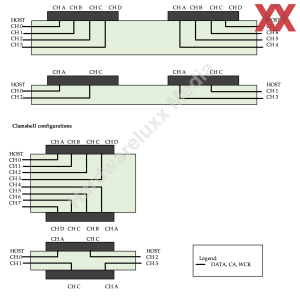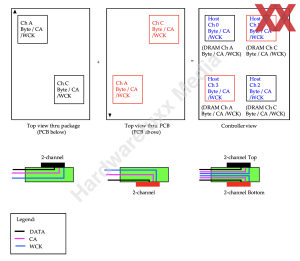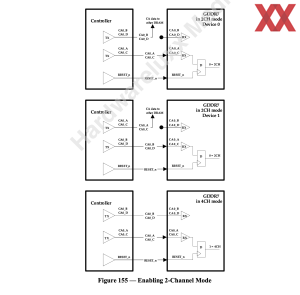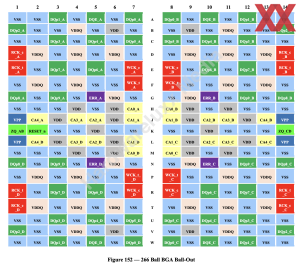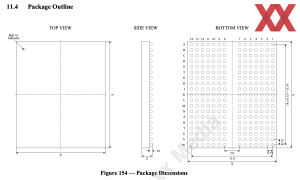Werbung
Die JEDEC Solid State Technology Association hat die finalen Spezifikationen für GDDR7 veröffentlicht. Bereits im vergangenen Jahr sprach Samsung über den kommenden Standardspeicher für Grafikkarten und dessen hohe Bandbreite von bis zu 37 GBit/s pro Kontakt-Pin. Erreicht wird die hohe Bandbreite durch eine Verdopplung des Durchsatzes – ähnlich wie bei DDR5. In den Spezifikationen sieht die JEDEC nun bis zu 48 GBit/s vor.
Als Pulsamplitudenmodulation kommt anstatt PAM-4 wie bei GDDR6X ein PAM-3 zum Einsatz. Anstatt vier Zuständen (00, 01, 10 und 11) muss das Signal auf derer drei (+1, 0 und -1) moduliert werden. Dies vereinfacht es aber auch bei hohen Taktraten überhaupt noch ein gültiges Signal auszulesen – das Signal-Rausch-Verhältnis ist günstiger. Mittels PAM-4 können pro Takt doppelt so viele Daten übertragen werden als beispielsweise mit einem NRZ mit zwei Zuständen (0 und 1). Ein PAM-3 liegt mit 50 % mehr Informationen pro Takt genau in der Mitte.
Die höhere Bandbreite erreichen die Chips einerseits durch einen Takt von 1,75 GHz, was in effektiven 7 GHz resultiert und andererseits durch die Verdopplung der Speicherkanäle von zwei auf vier, über die ein GDDR7-Speicherchip angesprochen werden kann. Es ist aber auch weiterhin möglich, die GDDR7-Chips über zwei Kanäle anzusprechen.
Natürlich müssen einerseits der Speichercontroller der GPU und andererseits das Routing des GDDR7-Chips entsprechend ausgelegt sein. Als GPU-Hersteller kann man sich hier also entscheiden, ob ein Quad-Channel-Mode für GDDR7 notwendig ist, oder nicht. Bei Nutzung der halben Menge an Speicherkanälen wird bei gleichem Takt allerdings die Speicherbandbreite halbiert.
GDDR7 wird zunächst in Kapazitäten von 2, 3 und 4 GB pro Chip angeboten werden. Zu diesen Kapazitäten gibt es bereits die entsprechenden Spezifikationen. Später geplant sind auch 6 und 8 GB pro Chip. Die Spannung, mit der die GDDR7-Chips betrieben werden, liegt bei 1,1 oder 1,2 V. Das Package des Chips kommt auf 12 x 14 mm und ist 1 mm hoch. Der Ball Patch beträgt 0,75, bzw. 0,73 in X/Y-Richtung. Die Dimensionen sind in etwa mit GDDR6 vergleichbar, respektive sogar identisch.
Wann und auf welchen Karten der GDDR7-Speicher erstmals zum Einsatz kommen wird, ist nicht bekannt. Die kommenden GeForce- und Radeon-Generationen werden sicherlich auf GDDR7 setzen.
